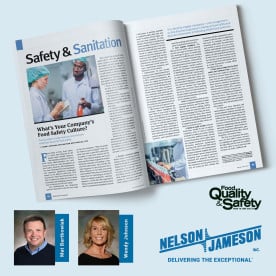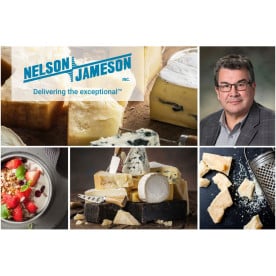Monthly Archives: March 2011
- March 31, 2011
On March 14th, 2011, Nelson-Jameson was visited by AIB’s professional audit staff for their annual food safety audit. AIB audits’ inspect and rate
- March 10, 2011
One hundred years ago, in October of 1911, seven dairy and milk inspectors met in Milwaukee, Wisconsin to form an organization dedicated to improving the safety of the milk supply. Typhoid fever, Diphtheria, scarlet fever, pneumonia, and tuberculosis were known to be transmitted in raw milk. So the founders met to consider standards and practices to address these “life and death” issues.
The program of the First Annual Meeting, of the International Association of Dairy and Milk Inspectors, also held in Milwaukee in 1912, was devoted largely to reports of the “methods employed and the results obtained in improving the milk supplies” of seven cities: Seattle, Springfield; Massachusetts; Omaha; Topeka; Boston; Detroit and Washington, DC. Thirty five people attended to hear presentations of about 30 papers.
It was during the 1918 Annual Meeting in Chicago that a Committee on the Pasteurization of Milk and Cream was authorized.
Fast forward to the 2010 meeting of the now International Association of Food Protection held last August in Anaheim California. It was attended by over 2100 government, industry and regulatory professionals representing over 50 countries. Over 500 papers were presented!
- March 03, 2011
As a distributor of packaging supplies, it’s important for us to keep up with new trends and information. The February 2011 edition of Prepared Foods features an editorial called “Nutritional Packaging Ratings and Goals”. It discusses how the Institute of Medicine issued a report in October 2010 discussing the advantages and disadvantages of current front-of-packaging (FOP) labeling. Here are six of the conclusions that this report disclosed:
1) FOP labeling is best geared toward the general population. However, the committee recognized that an appropriately designed system may be useful for determining products that may be marketed to children.
2) The most useful primary purpose of FOP labeling would be to help consumers identify and select foods based on the nutrients most strongly linked to public health concerns for America.
3) Regardless





